Retour
Jean-Baptiste Camps, Jean-Baptiste Camps, La Chanson d’Otinel. Édition complète du corpus manuscrit et prolégomènes à l’édition critique, Perspectives médiévales. Revue d’épistémologie des langues et littératures du Moyen Âge, 2017/01/01
Jean-Baptiste Camps, Jean-Baptiste Camps, La Chanson d’Otinel. Édition complète du corpus manuscrit et prolégomènes à l’édition critique, Perspectives médiévales. Revue d’épistémologie des langues et littératures du Moyen Âge, 2017/01/01
Codicologie, Paléographie, chanson de geste, ecdotique, histoire des textes, humanités numériques, linguistique computationelle, philologie, philologie numérique, réception, scriptologie, stemmatologie, traduction médiévale, édition numérique
The Chanson d’Otinel : Complete Edition of the Manuscript Corpus and Prolegomena to a Critical Edition. Part of the geste du roi, the Chanson d’Otinel had not been the subject of an edition since the pioneer work of F. Guessard and H. Michelant in 1858. Starting with the tangible objects that manuscripts are, and proceeding to the study of the tradition and work itself, this study aims to provide a new examination of all the available data, in order to enable a restoration of a song that has know an important diffusion in Medieval Europe, but whose scattered remains only are available to us.This study is given a firmly methodological orientation, and searches to apply to the edition the epistemological progresses brought by recent contributions in the field of textual criticism and ecdotics, as well as by what is now called “Digital Humanities”. It aims at overcoming the debate between “New” and Traditional Philology, based on the common errors method or of Bedierist inspiration, to place itself in the perspective of a “Fourth Way” and of an edition “oriented towards the tradition”.Digital scholarly editing and Digital Philology techniques are used in order to provide a full edition of the manuscript corpus, with “layered” transcriptions that give access to different representations and to the graphic system of all witnesses. The edition aims also at the study and description of the links between these witnesses, by suggesting a method of representation of textual variance and by rooting genealogical analysis in a global consideration of the tradition, including medieval translations (in Welsh, Norse, English) and derived versions.The modelling and description of manuscripts and their texts – formalised by an xml/tei model conceived for this edition but seeking to be of more general interest – is clearly oriented towards data mining, and computational as well as traditional analysis (Palaeography, Scriptometry, Stemmatology). Methods from the fields of mathematical modelling, statistics, algorithmic, and artificial intelligence are put to use, as well as processes seeking to allow interoperability, scalability, and systematisation of editorial work (optical character recognition, linguistic tagging, collation), in a workflow centred on analysis. Main used languages are xml (tei, xslt), r and Python.
1 œuvre traitée
>
Anonyme |
Otinel |
Qui veust oir chançon de biau semblant / Si face paiz, si se traie en avant / S'orra la flor de la geste vaillant
3 projets de parution traités
>
COLOGNY (GENEVE) | Biblioteca Bodmeriana | 168
>
Paris | Bibliothèque nationale de France, Manuscrits | nouv. acq. fr. 05094
>
VATICANO (CITTA DEL) | Biblioteca apostolica Vaticana | Reg. lat. 1616




